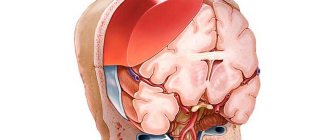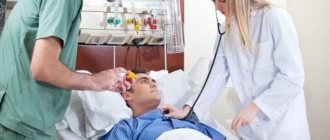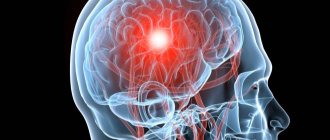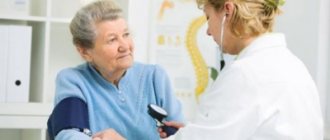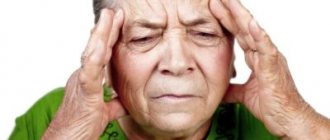Ischemic stroke is an acute disorder of cerebral circulation that occurs as a result of blockage of an artery in the brain, resulting in the death of neurons in a certain area of the brain that received nutrition from this artery.
In modern times, ischemic stroke has become one of the main causes of death. Most of those who were able to survive an ischemic stroke remain disabled. Therefore, it is so important to talk about what consequences this disease leads to and what methods of restorative treatment exist.
Let's briefly talk about the etiology of the disease
- Atherosclerosis of cerebral vessels. When cholesterol is deposited in the blood vessels of the brain, atherosclerotic plaques form. In this case, there may be two mechanisms for the occurrence of a stroke: The plaque will increase in size until it causes occlusion (complete blockage) of the vessel, which stops blood flow.
- An atherosclerotic plaque can be unstable, that is, part of it can move freely and at some point come off, entering smaller arteries with the blood flow, this piece of plaque clogs it and an ischemic stroke of the brain develops (see how to reduce cholesterol without drugs) .
- Atrial fibrillation. In this case, there is a risk of developing cardioembolic ischemic stroke. With atrial fibrillation, especially in the paroxysmal form, there is a high risk that during the next paroxysm, small blood clots from the chambers of the heart will enter the carotid arteries, and from there into smaller arteries that supply the brain.
- Hypotension. This reason is quite rare, but it is worth mentioning. With a sharp drop in blood pressure, the volume of circulating blood in the brain decreases, which leads to disruption of its nutrition.
- Thrombosis. Blood clots can form in any vessels, including in the vessels of the brain when the coagulation system is disrupted, due to vasculitis, genetic abnormalities, and also when women take oral contraceptives.
Recently, cases of severe ischemic strokes in young women taking oral contraceptives have become more frequent, which is associated with the widespread use of this method of contraception.
Recovery time and prognosis
It is difficult to say exactly how long it will take to recover from the most acute period of an ischemic stroke. This process is influenced by the type of stroke suffered, the age of the victim, as well as the size of the affected area of the brain and the characteristics of therapy.
This is also influenced by the patient’s mood for the result. Often after a stroke, patients become depressed, and this complicates the treatment process. Since in this case not only physical health suffers, but also the human psyche.
A stroke unsettles both the victim and those around him. But in order to be able to return to your previous life, it is worthwhile to engage in rehabilitation and, even after achieving the effect, not to abandon restorative measures.
Source
Risk factors for ischemic stroke
- Hypertension and its improper treatment. Blood pressure level should be below 140/90 mmHg! Taking medications must be constant, otherwise blood pressure surges occur, which creates a risk of stroke.
- Diabetes
- Older age (see how to use a simple test to determine a person's risk of stroke and dementia)
- Taking oral contraceptives. Especially in combination with age over 35 years, smoking or hypertension
- Smoking
- Obesity
- Hypercholesterolemia. The permissible cholesterol level is not higher than 5.2 mmol/l (see more details on cholesterol levels in women and men)
- Arrhythmias
Clinical picture of ischemic stroke
Symptoms of ischemic stroke depend on the location of the lesion. There are also general symptoms that appear with any location of ischemic stroke. These include headache, impaired consciousness up to coma, there may be dizziness, dysfunction of the pelvic organs.
With a lesion located in the right hemisphere, the following symptoms are observed:
- Left-sided hemiplegia or hemiparesis - decreased strength in the left limbs or their complete immobility.
- Left-sided hemianesthesia or hemihypesthesia is a decrease or complete absence of sensitivity in the left extremities and the left half of the face.
- Left-handers have speech impairment.
- Facial asymmetry (smoothness of the nasolabial fold and drooping corner of the mouth on the left).
The first signs of a stroke. Click to enlarge the picture
- Right-sided hemiplegia or hemiparesis is a decrease in strength in the right limbs or their complete immobility.
- Right-sided hemianesthesia or hemihypesthesia is a decrease or complete absence of sensitivity in the right limbs and the right half of the face.
- Right-handers have speech impairment, misunderstanding of speech, and inability to reproduce it.
- Facial asymmetry on the right.
For a lesion located in the cerebellum and brainstem:
- Swallowing problems (choking on liquids and food).
- Coordination problems.
- Dizziness.
- Disturbance of the respiratory system.
- Nausea, vomiting, persistent hiccups.
- Dysarthria is a speech disorder in which it is difficult to pronounce words, as if a person has porridge in the mouth.
By severity
Depending on the severity of the violations, they are divided into:
- Transient ischemic attacks occur with lightning speed. Symptoms vary depending on the area of the brain affected. Manifested by disturbances in brain or visual activity. Symptoms disappear within a day.
- Small stroke (microstroke) – duration from 2 to 21 days. It occurs against the background of chronic diseases: hypertension, blood diseases, thrombosis, and also taking birth control pills.
External symptoms may include:
- unsteady gait;
- paralysis of the head;
- hypertonicity in muscles;
- convulsions;
- joy or anger for no reason.
- Stroke of moderate severity - recovery is observed over several months. There is no cerebral edema or prolonged disturbances of consciousness. It manifests itself in moderate severity of neurological symptoms.
- Extensive - a massive, severe stroke is generally called extensive. In this case, the following symptoms are pronounced:
- cerebral edema;
- loss of motor ability on one side of the body (opposite to the affected one);
- speech disorder, loss of awareness of oneself in space and time, lack of understanding of one’s current state;
- autonomic disorders;
- manifestation of anisocoria - the pupil on the affected side of the body enlarges;
- eyes stop responding to light, or react weakly;
- the eyes move pendulum-like or squint appears;
- spasms of tonic muscles;
- the tone of the extensor muscles increases.
Often large strokes occur in the beds of large arteries. They occur equally often in men and women. Often this type of stroke causes death. Also, a person may lose partial or complete motor ability for the rest of his life.
Diagnosis of the disease
Basic diagnostic methods:
- History taking, neurological examination, physical examination of the patient. Identification of concomitant diseases that are important and influence the development of ischemic stroke.
- Laboratory tests - biochemical blood test, lipid spectrum, coagulogram.
- Blood pressure measurement.
- ECG.
- MRI or CT scan of the brain allows you to determine the location of the lesion, its size, and how long ago it formed. If necessary, CT angiography is performed to identify the exact location of vessel occlusion.
Which stage is the most dangerous?
The most dangerous periods of ischemic stroke are acute and acute.
If medical care is not provided in a timely manner during the acute period, it will be impossible to reverse the consequences of brain damage. Gradual mass death of neurons will lead to loss of brain function and death. During the acute period, there is a high probability of developing complications (edema, hemorrhage, cardiovascular failure, etc.) and recurrent stroke. Experts consider the 3rd, 7th and 10th days after the appearance of the primary manifestations of the pathology to be especially dangerous for ischemic stroke.
Consequences of ischemic stroke
Such a serious illness cannot pass without a trace for a person. If he managed to survive, it would not be without consequences. After an ischemic stroke, the patient may remain disabled for life, or may have minor problems that he quickly learns to live with or completely get rid of as a result of rehabilitation treatment.
It should be remembered that it is possible to influence the consequences of ischemic cerebral stroke only in the first year after the development of the disease. After a year has passed from the onset of the disease, restorative treatment will become meaningless and ineffective.
Possible consequences of ischemic stroke:
- Impaired motor function – strength in the limbs may not be fully restored. Weakness in the leg will force the patient to use a cane; weakness in the arm will make it difficult to perform some household activities, including dressing and holding a spoon.
- Loss of sensation in the limbs and face. Sensitivity always takes longer to restore muscle strength in the limbs. This is due to the fact that the nerve fibers responsible for sensitivity and the conduction of corresponding nerve impulses are restored much more slowly than the fibers responsible for movement.
- Speech impairment may not be present in all patients who have suffered an ischemic stroke. They make it difficult for the patient to communicate with his family, sometimes the patient may speak completely incoherent words and sentences, sometimes it may simply be difficult for him to say something. Such disorders are less common in right-sided ischemic stroke.
- The consequences can manifest themselves in the form of cognitive impairment - a person may forget many things familiar to him, telephone numbers, his name, the name of his relatives, address, he may behave like a small child, underestimating the difficulty of the situation, he may confuse the time and place in which he located.
- Mental disorders – many stroke survivors experience post-stroke depression. This is due to the fact that a person can no longer be the same as before, he is afraid that he has become a burden to his family, he is afraid that he will remain disabled for life. There may also be changes in the patient's behavior; he may become aggressive, fearful, disorganized, and may be subject to frequent mood swings for no reason.
- Swallowing disorders - the patient may choke on both liquid and solid food, this can lead to aspiration pneumonia, and then death.
- Impaired coordination manifests itself in staggering when walking, dizziness, falling during sudden movements and turns.
- Epilepsy – up to 10% of patients after an ischemic stroke may suffer from epileptic seizures.
- Dysfunction of the pelvic organs - the intestines and bladder cannot always continue to function normally after an ischemic stroke. In this regard, the patient requires careful care from relatives or a caregiver.
What to expect?
What is the life expectancy of people after a stroke? Statistics show the following numbers:
- Only 40% of patients can survive the first year of this condition (more related to the age category).
- 65% live longer than five years.
- A quarter of those who become ill overcome all difficulties and their life lasts as many years as allotted.
- If we take all factors into account, then with a successful combination of circumstances, medical care and the care of loved ones, there is a chance for a full recovery after a stroke.
Grandmother is 81 years old. Yesterday, October 23, I had a stroke. As soon as I saw that my mouth was distorted and my speech was becoming impaired, I called an ambulance, which arrived very quickly and, after the first 15 minutes after the first symptoms, first aid was given. Speech is impaired and there is weakness on the left side, but he can move somehow. Tell me, what are the chances that everything will be fine? And will she be able to return to normal life again? Or at least after some time it will be clear what to expect.
By taking adequate measures up to 4.5 hours after a stroke, a person is more likely to regain full or partial body function.
In 90% of cases yes.
My grandmother (61 g) has an ischemic stroke, she can say yes/no, she is completely paralyzed from the head down. Doctors say that everything is serious. Explain, 4 days have already passed since the stroke, can we already say that she will live?
Hello! I am diagnosed with ischemic stroke (12/03/15). Blood circulation is impaired (rupture of veins) in the brain, left side of the back of the head, complaints; dizziness, lack of visibility of the right side, disturbed sleep and that’s it. Please help me. I look forward to your reply
Hello, my mother suffered a stroke, ischemic cerebellar hemorrhage. The MRI course was taken off and she received treatment; at the beginning she suffered from vomiting, then it gradually went away, now sometimes she only vomits when she feels bad and then comes to her senses. I suffered from insomnia and now I lie down all the time, even though I sit and sleep, I have no strength. We go to the toilet together or we might fall. Somehow she started walking to the toilet on her own and eating well, now she’s feeling bad again and her head seems to be hurting, she doesn’t speak. She has type 2 diabetes mellitus and stage 3 hypertension. Tell me how is it? How are you coping, what are you doing?
Treatment methods for ischemic stroke
One of the most effective and modern methods is thrombolytic therapy. The main and most important condition for using this method is admission to the neurological department earlier than 3 hours from the onset of the first symptoms!
Thrombolysis is based on the fact that a drug (thrombolytic) is administered intravenously to the patient, which instantly begins to dissolve the formed blood clot in the vessel that has blocked it. As a result, normal blood flow in the arteries of the brain is restored. The effect is often felt, as they say, “on the needle,” during the first minutes and even seconds of drug administration.
Using the method later than 3 hours from the onset of an ischemic stroke is pointless, since irreversible changes have already occurred in the brain and dissolving the blood clot will not have any positive effect. Therefore, it is especially important to contact an ambulance at the first signs of a stroke, otherwise you may not have time to get into this “therapeutic window”. It should be remembered that in the hospital, before starting thrombolytic therapy, the patient must be carefully examined, a series of tests must be performed, and hemorrhagic stroke must be ruled out, and this also takes a lot of time.
This method has a number of contraindications, the presence of which is determined by the doctor before choosing treatment tactics.
A very important aspect when choosing a treatment method is the differentiation of ischemic and hemorrhagic stroke. CT or MRI can best help with this; only these research methods provide accurate data on the type of stroke. In his absence in the hospital, the doctor will evaluate a number of clinical syndromes, the development of the disease, and may use a number of other diagnostic methods, for example, lumbar puncture, to accurately establish the diagnosis.
Thrombolysis is carried out only if it is established with 100% probability that this is an ischemic stroke, otherwise the administration of a thrombolytic will lead to death. Since a hemorrhagic stroke causes bleeding in the brain, and “thinning” the blood with a thrombolytic will cause severe bleeding and an increase in the resulting hematoma.
If thrombolysis is not possible, treatment is carried out using standard methods:
- lowering blood pressure
- antiplatelet agents (aspirin preparations) or anticoagulants (heparin, fraxiparin, clexane),
- drugs that improve cerebral blood flow (cavinton, piracetam, trental)
- B vitamins
- restorative treatment methods
- prevention of bedsores
- control of blood pressure and excretory functions
- Among folk remedies one can highlight the use of pine cones for stroke
as a preventive measure or during the recovery period
You cannot self-medicate, since to choose a treatment method you need to know exactly the type of stroke; clinically they do not differ. While at home, a person cannot determine whether he has a hemorrhagic or ischemic stroke, so self-administration of drugs can lead not only to worsening of the condition, but also to death.
The most acute stage
This stage represents the time interval from the onset of cerebral circulatory disorders to the onset of irreversible changes in its tissues. The speed of medical care during the acute period of a stroke directly affects the prognosis for the patient. In a short time it is necessary:
- diagnose an attack;
- hospitalize the patient;
- start emergency treatment.
Diagnostics
- Neurological symptoms that appear suddenly and severely in a patient, often after emotional or physical stress:
- motor disorders (“crooked” smile, “drunk” gait, loss of control over limbs, etc.);
- sensory disorders (loss of sensation in different parts of the body);
- speech disorders (slurred speech).
- A history of possible severe pain in the head, cramps, painful sensations in the arms and legs.
- To determine the nature of the stroke (ischemic or hemorrhagic), its location, and the size of the damage, the patient undergoes a computer (CT) or magnetic resonance imaging (MRI) scan of the brain.
Therapy
Drug exposure in the first 3 hours should help restore blood supply and reduce or eliminate massive neuronal death.
Carrying out passive gymnastics and massage of the limbs from the first hours is a preventative measure for one of the main causes of death in strokes - pulmonary embolism and increases the chances of successful rehabilitation.
Find out how long people live with damage to the right side and other consequences in this material.
Rehabilitation treatment
Otherwise, this is called neurorehabilitation, which is best done in specialized rehabilitation centers (see the list of rehabilitation centers after a stroke in Russia). It should be started from the first days of the disease. There are a number of techniques that can significantly improve the quality of life of such patients (see rehabilitation after stroke).
- For movement disorders, physical therapy, massage, gymnastics, and physiotherapy are used. One of the new methods is PEMS (programmed electrical myostimulation), this method makes the muscles “remember” how it worked before this disease. Various simulators are also used that allow you to first passively work with the affected limbs (the movements are performed by the simulator), then allow the muscles to actively engage in work.
- In case of speech disorders, classes with a speech therapist are necessary; there are also devices that stimulate the work of the muscles of the larynx and pharynx, for example, “Vocastim”.
- If swallowing is impaired, this device and swallowing training also help; it is necessary to carefully feed and water the patient from a spoon.
- If coordination problems develop, it is necessary to conduct classes on a stabiloplatform, a special apparatus where it is possible to train coordination and learn to maintain balance and redistribute body weight when trying to perform any movement.
- Another important aspect of the rehabilitation of such patients is psychotherapy. All of them experience psychological discomfort in connection with what happened, no one can cope with it on their own, a specialist - a psychotherapist - must help him with this.
- To improve blood supply and brain function, courses of drugs such as Tanakan, Cavinton, Cerebrolysin, Bilobil and others are prescribed.
Prevention of ischemic stroke
It is much easier to prevent the development of a disease than to cure it later. Therefore, the issue of prevention is very acute.
- Control blood pressure, keeping it below 140/90 mmHg.
- Blood sugar control – no higher than 5.5 mmol/l.
- Control of blood cholesterol levels – no higher than 5.2 mml/l.
- Monitoring the blood coagulation system - take a coagulogram once a year.
- Weight control.
- Quitting smoking.
- Active lifestyle, moderate physical activity.
Prevention of recurrent ischemic stroke
If the patient has already suffered an ischemic stroke, then in addition to the prevention methods listed above, the following are also vital for him:
- Taking antiplatelet agents (aspirin) for life!!! These include: Thrombo ass, Cardiomagnyl and others (see all about cholesterol pills)
- If there is concomitant atrial fibrillation, warfarin is prescribed; in this case, it is necessary to regularly monitor the INR and maintain it at the target level! Only a doctor should adjust the dose of this drug! An independent, even minor, change in the dose of warfarin can lead to tragic consequences!
- Taking statins and cholesterol-lowering drugs for life! Skipping the drug reduces all previous efforts to zero! These include: Atoris, Liprimar, Zocor, Mertinil and others.
Attention! The medications listed in the article are not prescribed and taking them without consulting your doctor is prohibited!
Author:
Revus Olesya Grigorievna, neurologist
